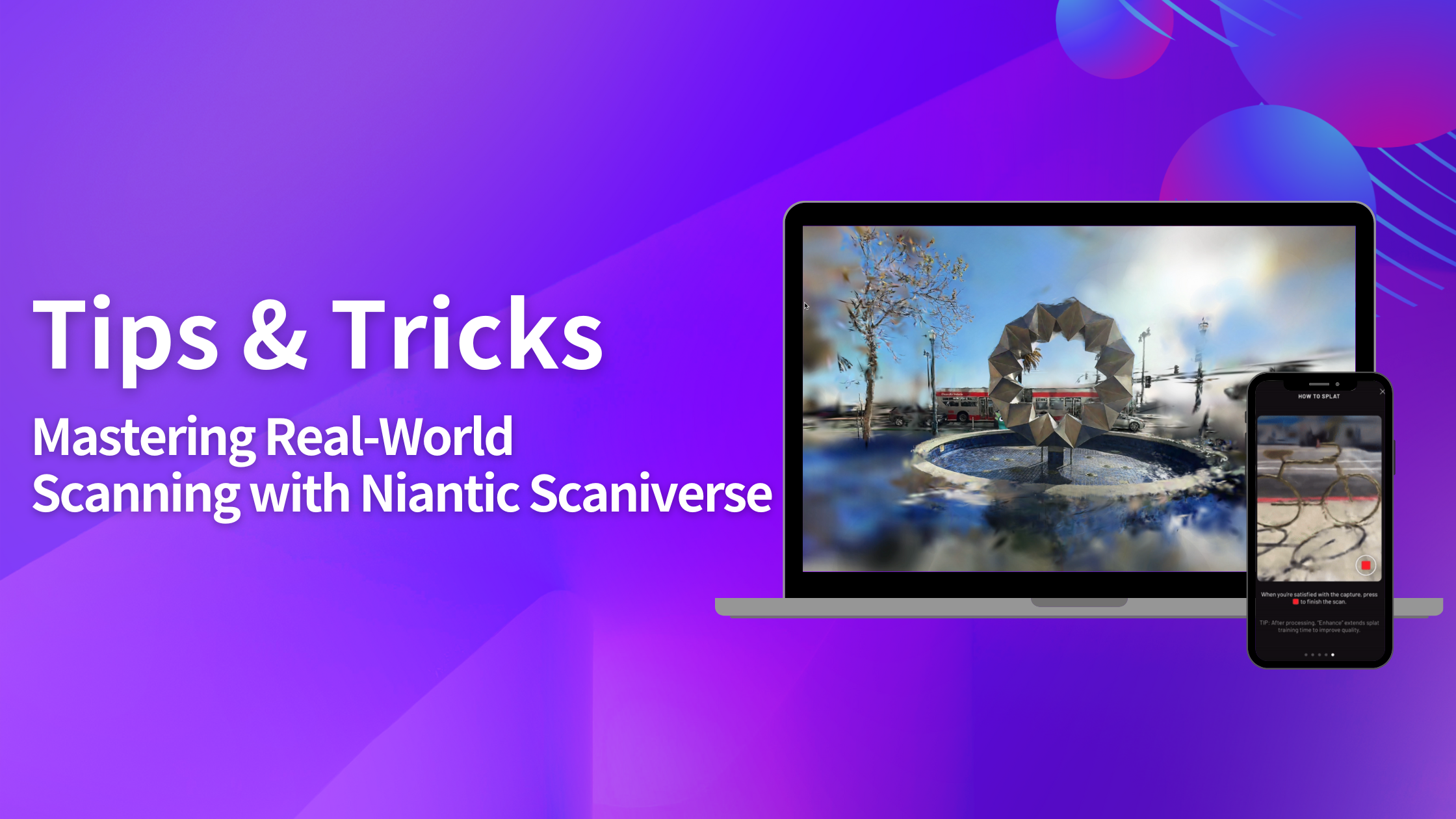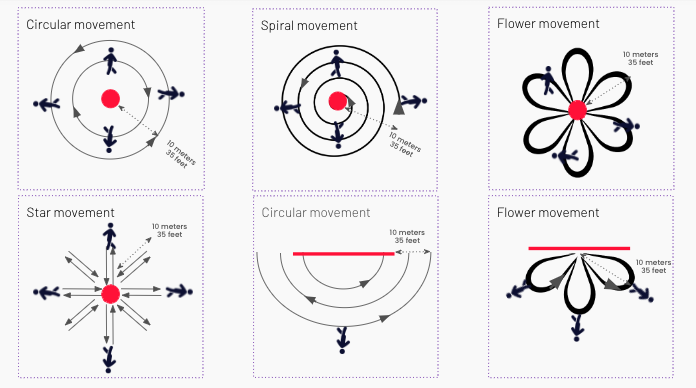8th Wall Blog
Mastering Real-World Scanning in Niantic Scaniverse
Unlock the Power of Niantic VPS with Precision Scanning Techniques in Scaniverse

With the recent release of Niantic VPS for Niantic Studio, developers now have powerful new tools to bring the physical world into immersive WebAR experiences. Niantic VPS is a groundbreaking AR technology that lets you localize users and anchor digital content in the real world with centimeter-level precision. Whether you're designing a virtual art installation or creating interactive gameplay in urban environments, VPS guarantees that your digital creations feel firmly rooted in the real world.
To support this innovation, we’re sharing top tips for using Niantic Scaniverse to capture real-world locations effectively.
Niantic Scaniverse enables developers to capture detailed, immersive 3D scans that bring real-world elements directly into WebAR experiences. Here are some tried-and-true best practices to help you achieve optimal results when scanning real-world objects and environments using Scaniverse.
Essential Prep Tips for Scanning with Niantic Scaniverse
Before heading out to capture real-world locations with Niantic Scaniverse, here are a few quick tips to ensure a smooth and effective scanning experience:
- Link Scaniverse with the Geospatial Browser
- Create a new public location before you begin to scan.
- Check the Weather: Make sure conditions are ideal for scanning to avoid interruptions.
- Use a LiDAR-Equipped Device: LiDAR-enabled phones capture more accurate, detailed scans.
- Bring a Portable Charger: You’ll likely need multiple scans to capture a complete location, so ensure your device has backup power.
- Plan Your Route: Map out your scanning path in advance to prevent missteps or unnecessary restarts.
Best Practices for Scanning
Now that you’ve made it out to the location you’d like to scan, it’s time to consider a few best practices for scanning:
1. Keep Moving, But Know When to Pause
Smooth and consistent movement is essential while scanning. Pausing is only useful when capturing fine details in complex areas. By keeping the phone in motion, you’ll capture more complete surroundings without sacrificing depth or texture. Below are a few recommended scanning patterns to think about using, our favorite is the flower movement!  2. Move Like a Crab for Comprehensive Coverage
2. Move Like a Crab for Comprehensive Coverage
To get a high-quality, accurate scan, try moving side-to-side while keeping the phone directly facing the object. This "crab-like" movement helps maintain the phone’s alignment, ensuring it captures the object without introducing distortions.
Tip: Shift your whole body, not just the phone. Keep your phone parallel to your shoulders to improve detail capture, enhance textures, and accurately render folds or contours.
3. Watch Your Angles
Maintaining consistent angles prevents gaps and incomplete textures. Avoid tilting the phone significantly, as angles less than or greater than 90 degrees can miss key details or create uneven textures.
4. Experiment with Lighting Conditions
Lighting plays a pivotal role in scan quality. Daylight works best, but interesting effects can also be achieved under different lighting, such as nighttime scans or using backlit signs. For scans requiring clarity and accuracy, opt for well-lit environments to reduce shadows and highlight texture.
Pro Tip: If you're feeling creative, try scanning at different times of the day to see how light variation can create unique visual effects. When scanning to activate a new VPS location in the Geospatial Browser you’ll need to do multiple scans at different times of the day.
5. Things to Avoid While Scanning
- Avoid scanning while the surroundings are not safe, e.g. in the middle of the road, or in a playground with children.
- Avoid scanning while the Location is too far away (>10m or 35ft) or too big to focus your camera on.
- Avoid scanning while you are casually taking a walk or jogging. It is important to keep the Location as your focal point at all times.
- Avoid pointing your phone at very bright objects such as a fluorescent light or the sun.
- Avoid not moving or moving too fast while scanning. Abrupt motions will cause offsets in the reconstruction.
- Avoid scanning if your phone gets too hot. If the temperature of the device rises too high, the performance of the device will be greatly reduced, which will negatively affect the scan.
- Avoid uploading any scans that look incomplete or not representative of what you're trying to scan.
By following these best practices, you’ll be on your way to crafting high-quality, VPS-enabled locations that enrich your WebXR projects.
For a step-by-step guide to ensuring your location gets added to the Geospatial Browser, check out our detailed instructions here. Happy scanning!
.png)